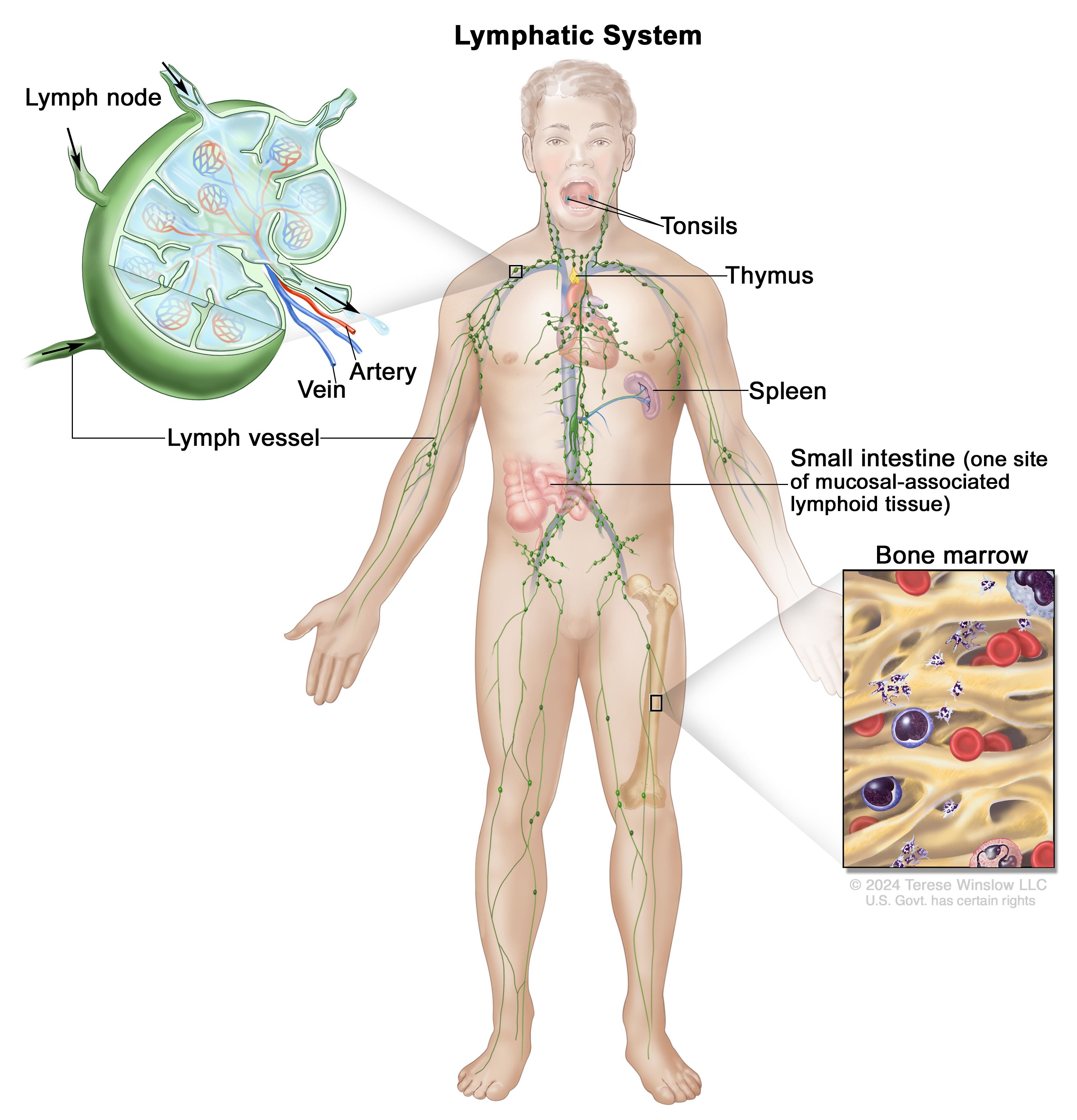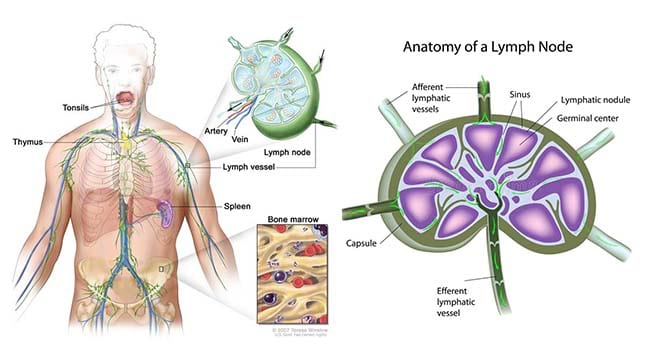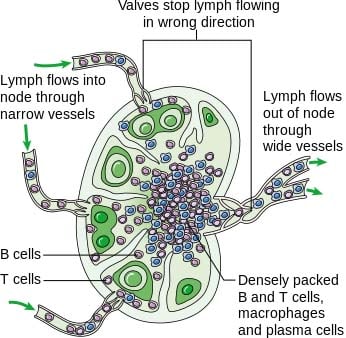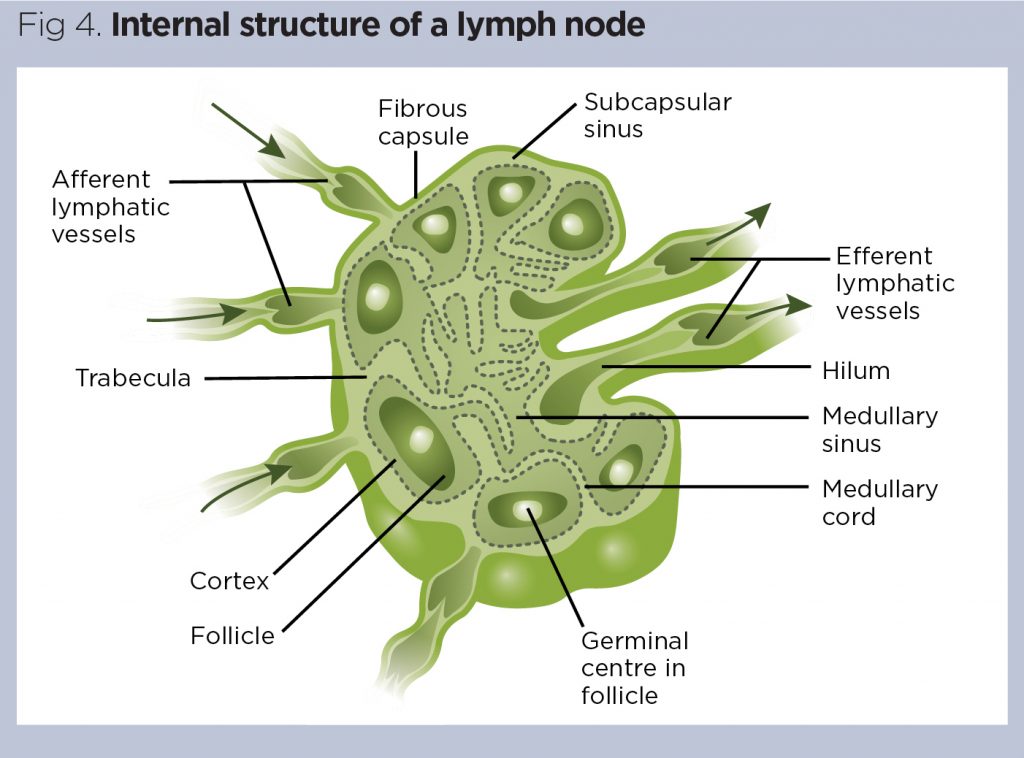Describe a Lymph Node and Its Major Functions
Phagocytic cells within them remove bacteria viruses and the like from the lymph stream before it is returned. Definition and Function of Lymph Nodes in the Body.
What Function Do Lymph Nodes Serve In The Lymphatic System Quora
Absorbing fats from the digestive tract.

. Draw a well labelled diagram of the lymph node and describe its main function. They contain both T and B lymphocytes as well as accessory cells and are primarily responsible for mounting immune responses against foreign antigens entering the tissues. Thanks to the many immune cells found within them the lymph nodes serve as a filtration point for the lymph that travels towards the venous system.
They are connected to other lymph vessels. Red blood cells age they lose their ability to bend and fold. Body cells are kept moist by the lymph.
Structure and function of lymph nodes. Conse- quently the cells can rupture as they pass slowly through the mesh- work of the splenic cords or the intercellular slits of the venous sinus walls. Lymphatic system filters the blood and excess filtered fluid is going to pump back into the blood circulatory system from intestitial space.
1transport excess tissue fluid small proteins to blood 2. The lymphatic system plays a key role in the immune system fluid balance and absorption of fats and fat-soluble nutrients. The lymph node is a small bean-shaped object which factors in the bodys immune system.
It helps in the production of immune cells- lymphocytes monocytes antibody-producing cells plasma cells. Function of Lymph Nodes. Locate the major body regions occupied by lymph nodes.
The 5 main functions of the lymphatic system include. Recover and clean excess tissue fluid and return it to bloodstream. An important function of lymph is that it captures the bacteria and bring them to lymph nodes where they are destroyed.
Lymph nodes filter lymph and the spleen filters blood. Click to see full answer. Lymph nodes play two major roles in the body.
Lymph nodes function in lymphocyte production and phagocytosis of foreign substances damaged cells and cellular debris. They produce and supply lymphocytes to the blood and as a supportive function the trabeculae carry blood vessels which supply the node. When the lymphocytes a type of white blood cell detect the presence of pathogens or germs that.
Major functions of lympahtic system. In this way what is the most important function of the lymph nodes. Cervical region axillary region inguinal region pelvic cavity abdominal cavity thoracic cavity and supratrochlear region.
Provide route for circulation of dietary lipids from small intestine. Please use one of the following formats to cite this article in your essay paper or report. Draw a well labelled diagram of the lymph node and describe its main function.
The primary function of lymph nodes is the filtering of lymph to identify and fight infection. Lymph nodes produce lymphocytes. But its operation is much more complicated.
Describe the primary functions of the lymphatic system. If the nodes ducts vessels or lymphatic tissues become blocked infected inflamed or cancerous then the lymphatic system can stop working properly. The lymph nodes house lymphocytes and other immune cells eg.
It also helps in the absorption of fatty acids and transport of fat and chyle to the circulatory system. See the answer See the answer See the answer done. The lymph vessels carry a clear fluid called lymph that is collected from tissues throughout the body.
Filtration of lymph and production of immune responses. Lymphatic system produces lymph along with lymphocytes to de. Lymph nodes are situated at strategic.
Theres no doubt The main function of the lymph nodes is of the immune type. If the fluid does not get drained it results in edema swelling over the body. That is they help the immune system in building an adequate immune response.
What are two major functions of the lymph nodes. Absorb fats from digestive transport to blood. Draining the lymph from the tissues.
Lymph contains cell wastes like cancer cells bacteria and viruses. Provide location for many of the cells of the immune system. Lymph Collection and Filtration.
The most important function of the lymph nodes is that they serve as multiplication sites for lymphocytes. In the lymphatic system a lymph node is a secondary lymphoid organ. To be more precise the afferent lymphatic vessels deliver unfiltered body fluid to the lymph node for filtration.
What are the main functions of the lymph nodes. The lymphatic system drains the lymph extra fluid leaking from the body tissues and returns it to the blood system. There are many lymph nodes found throughout the body.
Here are the major functions of lymph nodes. Lymph acts as a middle man which transports oxygen food materials hormones etc to the body cells and brings carbon dioxide and other metabolic wastes from the body cells to blood and then finally pours the same into the venous system. -The major body regions include.
The lymphatic system absorbs fats fat. Dendritic cells link these two processes as they are carried by lymph to the lymph node and interact. This problem has been solved.
There are about 600 lymph nodes in the body. Lymph is drained and collected from the adjoining parts of the lymph nodes. Lymph nodes clean out substances that travel through the lymphatic fluid and they contain white blood cells that are the bodys defense when fighting off ailments.
Everyone has an extensive lymphatic system in their body which consists of lymph nodes and lymph vessels. The lymph node with its high concentration of lymphocytes and antigen-presenting cells is an ideal organ for receiving antigens that gain access through the skin or. Lymph nodes are small solid structures placed at varying points along the lymphatic system such as the groin armpit and mesentery.
The sinuses of the lymph node perform the filtration function while the lymphatic tissues of the cortex and medulla produce immune responses.

Definition Of Lymph Node Nci Dictionary Of Cancer Terms National Cancer Institute

Structural And Functional Aspects Of Lymph Node Organization A Download Scientific Diagram

The Lymphatic System Consists Of Lymph Lymph Nodes And Vessels Collecting Ducts Spleen Thymus Tonsils And Adenoid Lymphatic System Immune System Lymphatic

Lymph Drainage Along The Length Of The Mucosa Efferent Lymph From The Caudal Lymph Node Flows Into The Ile Lymph Drainage Thoracic Duct Lymphatic Drainage

Anatomy Physiology Of Lymph Nodes Youtube

Lymph Nodes Structure And Functions

The Lymphatic System Vessels Nodes Organs Teachmeanatomy

Lymphoma Action The Lymphatic System

The Lymphatic System 2 Structure And Function Of The Lymphoid Organs Nursing Times

Lymph Node Structure The Typical Structure Of A Lymph Node Download Scientific Diagram

Immune Lymphatic System Lymph Node Science Notes Body Systems Lymph Vessels

Pin On Major Body Systems Anna

Human Immune System Some Organs Of The Immune System Are Called Lymphoid Organs Because They Are A Home To Lymphocyt Lymphatic System Immune System Lymphatic




Comments
Post a Comment